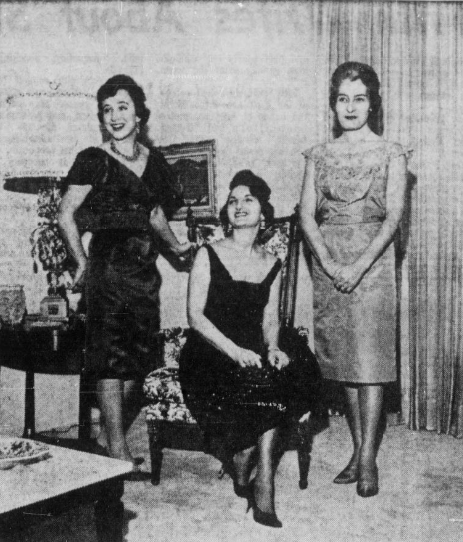In 1870, Louis Riel and those who fought alongside him insisted that the land rights of their descendants be protected. Decades later, less than 10% of a promised 1.4 million acres had made its way into the hands of Métis families. What happened to the rest of it?
In this episode we’ll be talking about Métis scrip: perplexing government policies, deliberate fraud, and the men who got rich from the whole fiasco.
Images
To respect the wishes of the Gabriel Dumont institute that the images on their site not be reproduced elsewhere, I have linked to specific items in their collection below rather than creating a slideshow of images as usual, and have used the titles and descriptions provided by the Institute. Most of these images can also be found in the Provincial Archives of Saskatchewan.
These images show the scrip commission, but are also a record of the lives and lifestyles of the Métis at the turn of the century.
- “A Sitting of the Commission” – Métis and Commissioners at a sitting of the Half-Breed Commission at Devil’s Lake, near Sandy Lake Reserve, 1900.
- “At Devil’s Lake” – A group of Indians and/or Métis outside the Half-Breed Commissioners’ tent, Devil’s Lake (near Sandy Lake Reserve) NWT, 1900.
- “Baking Bannocks” – Half-Breed Commissioner’s York boat crew baking bannock in camp, 1900.
- “Commissioners’ Mess Tent” – The Half-Breed Commissioners’ mess tent, with Commissioners seated at table, Duck Lake, 1900.
- “Send off to commissioners, Grand Rapids” – A group of people giving a “send off” for the Half-Breed Commissioners, Grand Rapids MB, 1900.
- “At Sturgeon River” – Members of the Half-Breed Commission at Sturgeon River, 14 September 1900.
- “At Batoche” – Unidentified man seated outside the Half-Breed Commissioners’ tent at Batoche, 1900.
- “At Onion Lake” – A group of Métis men, women and children sitting beside a campfire, Onion Lake NWT, 1900.
- “Group of Half-Breeds at Grand Rapids” – “Métis women and children, at the time of the visit by the Half-Breed Commission, Grand Rapids MB, 1900.”
Sources/Further Reading
- Augustus, Camie. “The scrip solution: the North West Metis scrip policy, 1885-1887.” Master’s thesis, University of Calgary, Calgary, Canada, 2005.
- Barkwell, Lawrence. “Métis Rights and Land Claims: An Annotated Bibliography.” 2002.
- Beal, Bob, and Rob McLeod. “The North-West Resistance.” The Canadian Encyclopedia, 2006.
- Fillmore, W.P. “Half-Breed Scrip” in The Other Natives: The Métis. Winnipeg: Manitoba Métis Federation Press, 1978.
- Flanagan, Thomas. The Market for Métis Lands in Manitoba: an Exploratory Study. Prairie Forum 16, 1991.
- Flanagan, Thomas. “Louis Riel’s Land Claims.” Manitoba History no 21, Spring 1991.
- The Gabriel Dumont Institute Virtual Museum – in particular, the Institute has conducted a number of oral history interviews that were referenced in this episode
- Goyette, Linda. “The X Files.” Canadian Geographic, March/April 2003.
- Hogue, Michel. Metis and the Medicine Line: Creating a Border and Dividing a People. University of Regina Press, 2015.
- Houle, Rob. “Richard Henry Secord and Métis Scrip Speculation.” City Museum Edmonton, 2016.
- Indigenous Peoples Atlas of Canada. “Scrip.“
- Library and Archives Canada. “Métis Scrip Records.”
- Lowe, Peter. “All Western Dollars.” MHS Transactions, Series 3, 1945-46 Season.
- Mair, Charles. Through the Mackenzie Basin: A Narrative of the Athabasca and Peace River Treaty Expedition of 1899.
- The Manitoba Act, 1870
- Metis Nation Historical Online Database
- Milne, Brad. “The Historiography of Métis Land Dispersal, 1870-1890.” Manitoba History number 30, Autumn 1995.
- Minister of the Interior. “Report of investigation by Judge R.H. Myers into charges made against Mr. R.C. McDonald by Hlf. Breeds of the United States re. scrip.” 1905. Library and Archives Canada. RG2, Privy Council Office, Series A-1-a.
- Robinson, Amanda. “Métis Scrip in Canada.” The Canadian Encyclopedia, 2018.
- Sprague, Donald. “Government Lawlessness in the Administration of Manitoba Land Claims, 1870-1887.” Manitoba Law Journal 415, 1980, accessed via CanLII.
- Teillet, Jean. The North West is Our Mother. Patrick Crean Editions, 2019.
- Supreme Court of Canada, Manitoba Metis Federation Inc. v. Canada
- The Winnipeg Foundation, “Dealing in Métis Scrip.”
- The Winnipeg Tribune Archives – stories about the scrip scandal discussed in this episode were covered in the Tribune throughout 1905


























































































